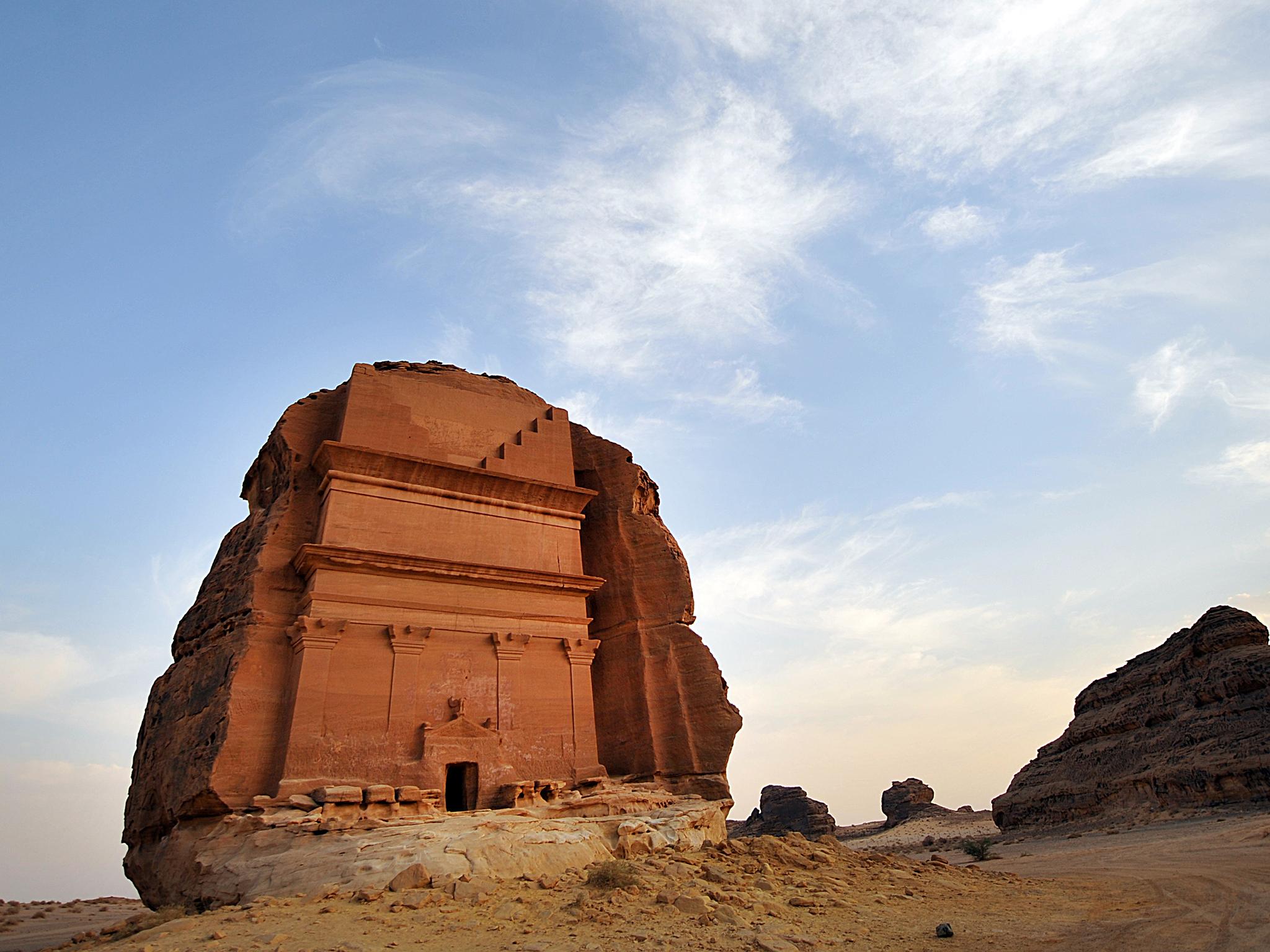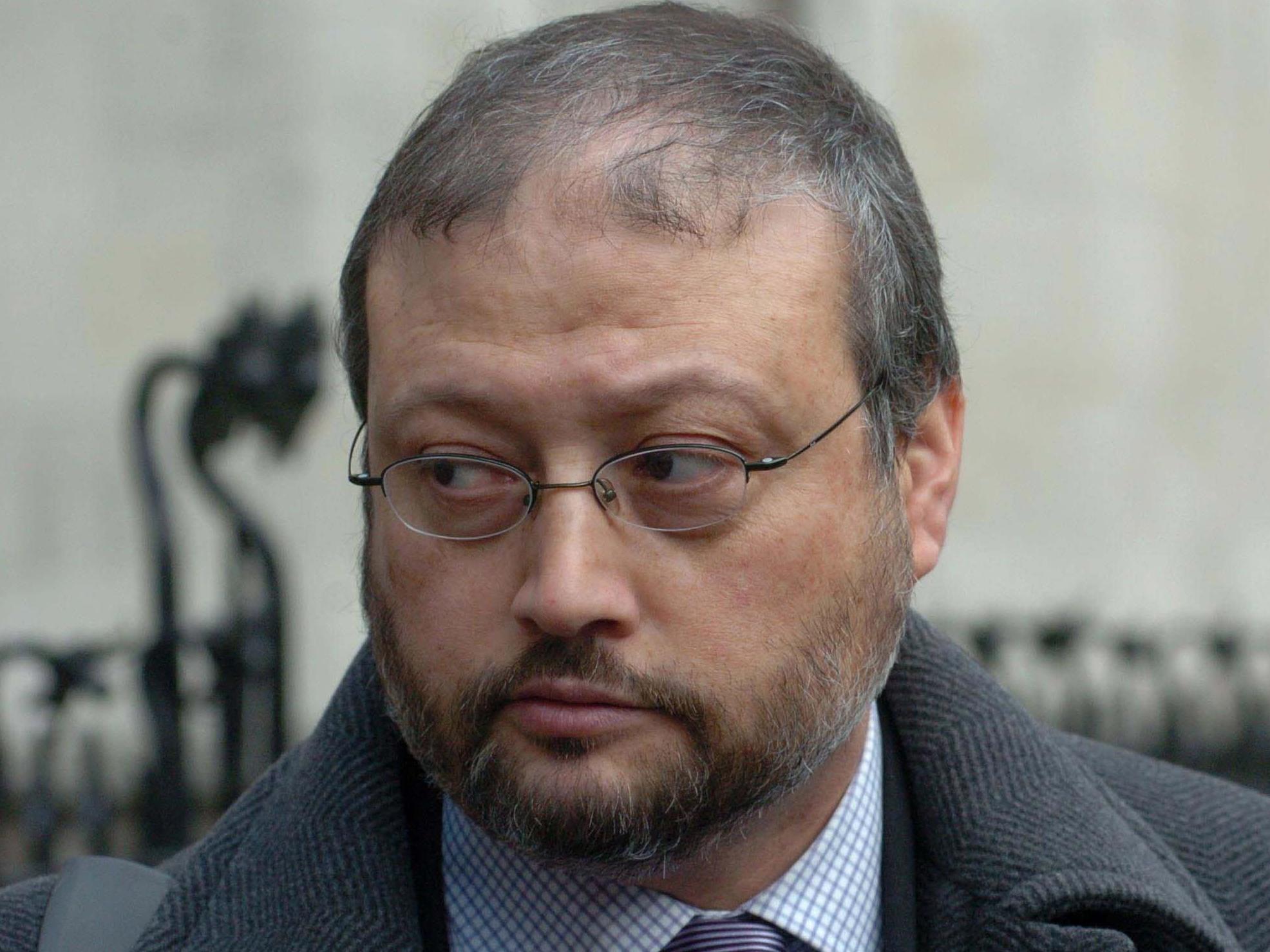Amid a crackdown on dissidents, Saudi Arabia presses on with its tourism push
The kingdom’s leaders say they have finally decided to let the world in, but could the killing of Khashoggi quell their ambitions, asks Kareem Fahim

Your support helps us to tell the story
From reproductive rights to climate change to Big Tech, The Independent is on the ground when the story is developing. Whether it's investigating the financials of Elon Musk's pro-Trump PAC or producing our latest documentary, 'The A Word', which shines a light on the American women fighting for reproductive rights, we know how important it is to parse out the facts from the messaging.
At such a critical moment in US history, we need reporters on the ground. Your donation allows us to keep sending journalists to speak to both sides of the story.
The Independent is trusted by Americans across the entire political spectrum. And unlike many other quality news outlets, we choose not to lock Americans out of our reporting and analysis with paywalls. We believe quality journalism should be available to everyone, paid for by those who can afford it.
Your support makes all the difference.The treasures are strewn over a swath of Saudi Arabia bigger than Lake Ontario, rising from the desert: a rambling Nabataean necropolis, a field of soaring stone pillars, a lonely Ottoman railway station, and graffiti, lots of it, inscribed over millennia on honey-coloured boulders and red mountain rock.
It is a unique and unruly mix of natural beauty and ruins that trace thousands of years of human settlement and the caravan routes of incense traders and pilgrims. But the site has struggled to find an audience beyond this cosseted kingdom, apart from the locals, intrepid tourists and archaeologists who have been sifting through the area’s civilizational silt for years. Now, Saudi Arabia’s leaders say they have finally decided to let the world in.
The attractions, around the city of Al-Ula, are the cornerstone of a planned effort to invite foreign tourists to the kingdom, beyond the millions of religious pilgrims who visit Saudi Arabia’s holy sites every year. Like many changes under way in the country, the plan is mostly aimed at boosting the economy by tapping sources of revenue beyond oil.
The ambitious initiative, led by Crown Prince Mohammed bin Salman, would be challenging in the best of times – relying on the government to abandon its wariness of foreign visitors and on the outside world to revise its perceptions of Saudi Arabia as a forbiddingly conservative society.
But recently, the challenge has only become more acute. The government’s crackdown on dissidents and perceived enemies has undermined its own aspirations for greater openness. The killing of journalist Jamal Khashoggi by Saudi agents in Istanbul in October led to international criticism of the crackdown and of the crown prince, who was widely blamed for ordering the killing. Saudi Arabia says Mohammed did not know about the plot, although it involved his most senior aides.
After the killing, some foreign companies and organisations distanced themselves from Mohammed’s initiatives, including projects promoting the arts, tourism and culture that have been embraced by thousands of Saudis.
“Tourism has great potential in the kingdom because it is so underdeveloped,” says Kristin Smith Diwan, a scholar at the Arab Gulf States Institute in Washington. “Saudis are especially hungry for more public spaces and cultural growth. But there are social barriers and fears to overcome in attracting an international clientele.”
“Jailing women activists doesn’t help,” she says, referring to the nearly eight-month detention without trial of Saudi Arabia’s most prominent women’s rights advocates. “Brutally killing a prominent journalist doesn’t help.”
Saudi officials are pressing ahead with the crown prince’s initiatives and hoping that high-profile cultural events might temper the criticism from abroad. The government recently introduced an electronic visa system that allowed hundreds of foreign visitors in December to attend a motor-sports event in Riyadh, the Saudi capital, that included concerts by western and Arab musicians.
Saudis are especially hungry for more public spaces and cultural growth. But there are social barriers to overcome
The plans to develop Al-Ula are the centerpiece of the tourism initiative. Officials leading the development effort believe that they can lure a mix of cultural tourists and eco-travellers from the west, visitors from the Gulf, and Saudis eager to broaden their view of national heritage to include a pre-Islamic history suppressed for decades by the country’s leaders and religious conservatives.
“We always knew we had an important historical site. But nobody knows about us,” says Ahmed al-Imam, a tour guide from Al-Ula whose family has lived for generations in the area, a place rich with culture but struggling with high unemployment. “We are hoping for more opportunities,” he says.

A royal commission created by the crown prince is working quickly to prepare the site to receive visitors within the next few years. Resorts are being planned, residents are receiving training to work with tourists, and teams of archaeologists and researchers are conducting surveys of historical sites and environmental features over roughly 9,000 square miles. A winter festival, currently under way, is a soft opening of sorts for the site, with appearances by international musicians and artists.
Amr al-Madani is the chief executive of the commission and is Al-Ula’s tireless promoter, shuttling back and forth to the remote site several times a month with an army of assistants and prospective developers. The first visitors he hopes to lure are Saudi citizens, resident expatriates and regional visitors. Within four years, the aim is for half of the site’s visitors to live within a six-hour flight from Saudi Arabia, he says.
The best-known attraction is the Nabataean necropolis Madain Saleh, a sister city to Petra, in neighboring Jordan, consisting of more than 130 tombs with columned facades carved into rock. But fewer people are aware that the area around Madain Saleh contains Bronze Age tombs, the ancient capital city of Dedan or evidence of the southernmost outpost of the Roman empire.
“We can be excited about heritage and nature, but the real deal is economic diversification,” Madani says, repeating a government mantra. He mentioned the possibility that the region could produce dates or natural plant-based oils. The government is also providing scholarships for more than 160 students to study tourism and the hospitality industry in an effort to create local jobs, he says.
Despite the obvious potential of Al-Ula and other historical sites around Saudi Arabia, the government, which tightly restricts travel to the kingdom, has not traditionally regarded tourism as important for the economy, Madani says. Saudi Arabia’s pre-Islamic heritage was also “marginalised”, he says.
For decades, the kingdom’s dominant historical narrative has focused almost exclusively on the rise of Islam in the 7th century, as well as the history of the ruling family. Saudi Arabia’s strictly conservative religious ideology regards any reverence for pre-Islamic sites as idolatry, leading to the destruction or neglect of artifacts and architecture from the pre-Islamic and early Islamic eras.
The government has won praise for taking greater measures over the past decade to protect pre-Islamic history, a heritage it highlighted in the landmark Roads of Arabia exhibition. At Al-Ula, “we are being encouraged to find what we find”, says Rebecca Foote, the commission’s director of archaeology and cultural heritage preservation. “Wanting to know everything about a period in a place and having the resources and the backing to do it on this scale, I believe is unparalleled.”
When Laila Nehmé, a senior research fellow at the French National Centre for Scientific Research, began working at the site 16 years ago, “there was nobody there”, she says. “The site was almost virgin. It’s a dream for an archaeologist.”
Over that time, she and other archaeologists established that the area was the southernmost outpost of the Roman empire, extending the empire’s boundaries by almost 200 miles. By studying 150 inscriptions in the area dating to the 3rd century, they found evidence of the transition of Nabataean script into Arabic.
People in Saudi Arabia were already well aware of the site, which is mentioned in the Koran. “What is new to them is this idea that it is part of their history, part of their national heritage,” Nehmé says. “It will take a little more time.”
© Washington Post
Join our commenting forum
Join thought-provoking conversations, follow other Independent readers and see their replies
Comments